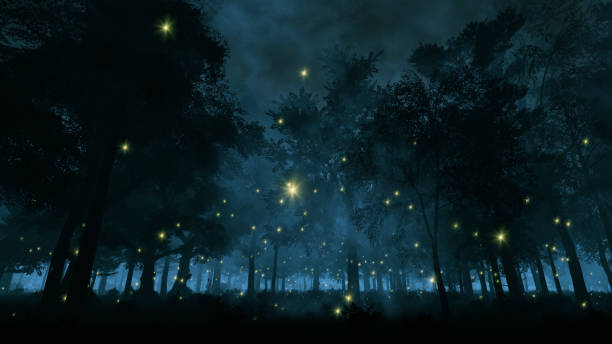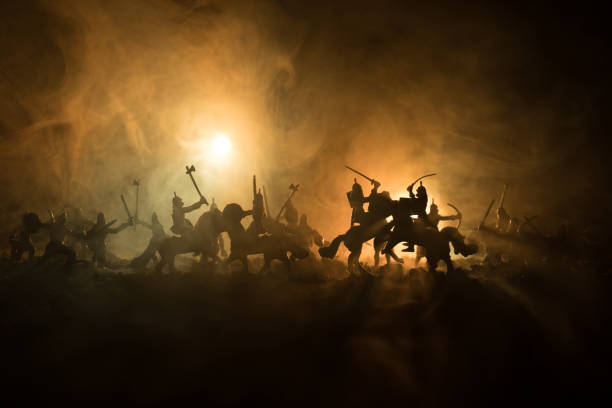Describing A Car Accident in Writing (12 Best Ways)
Describing A Car Accident in Writing
Describing A Car Accident in Writing: Describing a car accident in writing is more than recounting events; it’s an art form that demands the writer’s skill and precision to immerse readers in a vivid and emotionally resonant experience.
Whether you are crafting a report for legal purposes, weaving a narrative for a creative piece, or conveying the harrowing realities of a real-life incident, the power of your words can transport the reader into the heart of the collision.
This guide explores the nuanced facets of describing a car accident in writing, from the pre-writing preparation that sets the stage, to the selection of descriptive elements that evoke sensory experiences, and the fine-tuning of language and style that leaves a lasting impression.
By embarking on this journey, you’ll learn to transform a seemingly mundane event into a compelling and unforgettable narrative, allowing your readers to not just read about the car accident but to live it.
Describing a Car Accident in Writing
Describing a car accident in writing involves providing a detailed and objective account of the incident. Here’s a step-by-step process on Describing A Car Accident in Writing:
Begin with a clear introduction
Start by introducing the accident, including the date, time, and location. Mention the vehicles involved and any other relevant information, such as weather conditions or road conditions.
Describe the sequence of events
Provide a chronological account of how the accident unfolded. Start with what led to the accident, such as the actions of the drivers or any contributing factors.
Identify the vehicles and drivers
Describe each vehicle involved in the accident, including their make, model, color, and license plate numbers. Mention the names of the drivers and their roles in the accident (e.g., the at-fault driver, the victim, etc.).
Explain the point of impact
Detail where and how the vehicles collided. Use specific terms such as “rear-end collision,” “side-swipe,” or “T-bone” to accurately describe the impact.
Provide information on injuries
If there were injuries, describe them in a factual manner. Include the names of the individuals involved, the extent of their injuries, and any immediate actions taken, such as calling for medical assistance.
Document property damage
Describe the damage to the vehicles, noting the extent of the damage and whether any parts of the cars were dislodged or scattered on the road.
Include witness statements
If there were witnesses to the accident, record their statements, including their names and contact information. Their observations can provide valuable insights into the events leading up to the accident.
Mention police involvement
If law enforcement responded to the scene, provide details about their presence, the officer’s name, badge number, and any actions they took, such as issuing citations or filing reports.
Include any contributing factors
Describe any factors that may have contributed to the accident, such as excessive speed, distracted driving, adverse weather, or road conditions. Be objective and factual in your assessment.
Conclude with a summary
Summarize the key details of the accident and its consequences. Mention any immediate actions taken, such as the exchange of insurance information or the towing of vehicles.
Attach any relevant documents
If you have photographs of the accident scene, the vehicles involved, or any related documents (such as insurance information), include them as attachments to your written description.
Be clear and concise
Write your description in a clear and concise manner, avoiding personal opinions, emotions, or biases. Stick to the facts and provide an accurate account of the accident.
Remember that when describing a car accident in writing, it’s important to maintain objectivity and accuracy, as the information may be used for insurance claims, legal proceedings, or police reports.
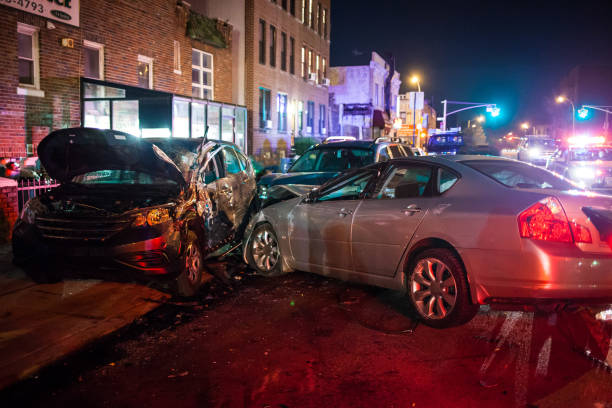
Pre-Writing Preparation
Pre-writing preparation is like setting the stage for a grand theatrical performance of words. It’s where the writer dons their director’s hat, gathers the props of knowledge, and dims the lights to cast the perfect ambiance.
Much like a detective, you delve deep into the evidence, scrutinizing accident reports, interviewing witnesses, and absorbing the intricate details of the scene.
It’s the moment you unlock the doors to your imagination, peering inside to discover the characters, the plot twists, and the untold stories waiting to be revealed.
As the curtain rises on this literary stage, you’ve armed yourself with knowledge, knowing your audience, and defining the narrative style – all in a symphony of preparation that transforms a simple car accident into an epic tale of intrigue and emotion.
Research and Gather Information
Research and gathering information is the foundational step in the writer’s quest to bring a car accident to life through words.
It’s akin to becoming a detective in pursuit of the most elusive clues, delving into the labyrinth of facts and details that surround the incident.
With unwavering determination, you scour accident reports, sift through witness statements, and scrutinize official records.
Every document becomes a piece of the puzzle, each interview a revelation, as you unearth the intricacies of the collision.
This painstaking process of fact-finding not only lends authenticity to your narrative but also ensures that every element is meticulously documented, ultimately crafting a vivid and truthful account of the car accident that will resonate with your readers.
Identify the Target Audience
Identifying the target audience is the compass that guides the writer’s journey when describing a car accident in writing.
Just as a skilled navigator must understand the destination, the writer must grasp the preferences, needs, and expectations of the readers who will embark on this literary voyage.
Are you addressing legal professionals seeking a comprehensive accident report, or perhaps a general audience interested in the human experiences intertwined with the collision? By defining the audience, you can tailor the tone, depth, and level of technical detail in your narrative.
This keen awareness empowers you to choose the words and perspective that will resonate most deeply, ensuring that your account of the car accident strikes a chord with the hearts and minds of those who matter most.
Structure and Organization
Structure and organization are the architectural blueprints of your narrative, the invisible scaffolding that turns words into a symphony.
Think of it as the choreography of your storytelling dance; the writer is the choreographer, leading the reader through an intricate routine of plot, setting, and emotion.
It’s the promise of a well-ordered sequence, a crescendo of details, the subtle art of building anticipation and delivering revelations.
Just as a magician unveils their tricks one step at a time, structure and organization are your secrets to weaving a tapestry of words that keeps the reader spellbound, turning pages with eager anticipation to see how the car accident unfolds in a harmonious, unforgettable performance.
Start with a Powerful Hook
Starting with a powerful hook is the writer’s equivalent of casting a captivating spell, a literary incantation that lures the reader into the enchanting world of your narrative.
It’s that electrifying opening, the irresistible bait that seduces the mind and heart, setting the tone for the entire story.
Whether it’s a shocking revelation, a poignant reflection, or an intriguing question, the hook acts as a portal, drawing readers in and compelling them to venture further into the tale of the car accident.
With this seductive invitation, you forge an unbreakable connection with your audience, igniting their curiosity and ensuring they remain spellbound, turning each page with eager fascination.
Establish the Setting
Establishing the setting is the canvas upon which the writer paints the world of the car accident, providing the backdrop against which the drama unfolds.
It’s the brushstroke of words that crafts the atmosphere, capturing the essence of time and place. The setting is not just a mere backdrop; it’s a silent character that influences the entire narrative.
Whether it’s a bustling urban intersection under a scorching sun or a quiet country road shrouded in mist, the setting has the power to evoke mood and emotion.
Through descriptive prose, the writer invites the reader to step into this meticulously painted world, to feel the pavement underfoot, to sense the humidity or chill in the air, and to be transported into the very heart of the car accident, making the experience vivid, immersive, and unforgettable.
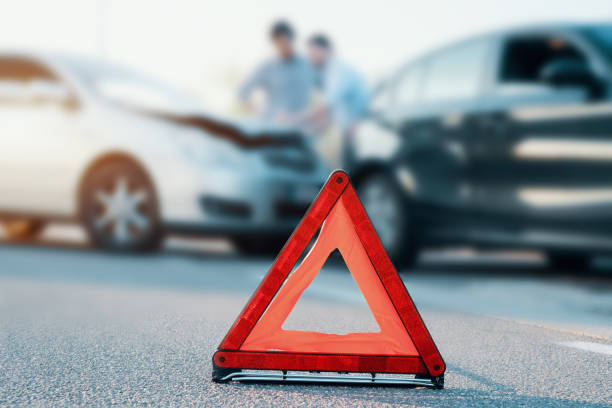
Descriptive Elements
Descriptive elements are the alchemist’s potions of the writer’s craft, concocting a brew that transmutes mere words into a sensory symphony.
They are the artist’s palette, allowing you to paint with the vibrant hues of sight, sound, smell, touch, and even taste.
With these tools at your disposal, you can transport the reader directly into the heart of the car accident, enabling them to see the shattered glass glistening in the sunlight, to hear the screeching tires, to smell the acrid tang of burnt rubber, and to touch the raw emotions that hang heavy in the air.
It’s through these descriptive elements that you awaken the senses, making your narrative an immersive experience where words transcend the page and become a living, breathing world of sensations and emotions that the reader can almost touch, taste, and feel.
Sensory Details
Sensory details are the writer’s secret arsenal, the keys that unlock the doors to the reader’s imagination and emotions.
They transform a simple narrative into an immersive experience, letting readers not just read but truly live the story.
It’s the sparkle of sunlight on shattered glass, the eerie hum of sirens in the distance, the lingering scent of gasoline in the air, and the palpable tension that lingers on the skin.
These details are the conduit to the reader’s senses, transporting them into the very heart of the car accident.
Sensory details bridge the gap between words on a page and the full-sensory experience, allowing readers to taste the fear, touch the tension, hear the chaos, see the aftermath, and breathe in the atmosphere of the scene.
In this tapestry of sensations, the car accident becomes more than a story; it becomes a vivid, unforgettable reality etched into the reader’s mind.
Vivid Imagery
Vivid imagery is the artist’s palette of the writer, a symphony of words that paints pictures in the reader’s mind.
It’s the ability to craft scenes so lifelike that they leap off the page and into the reader’s imagination. When you employ vivid imagery in describing a car accident, you’re not just narrating an event; you’re creating a living, breathing tableau.
The crushed metal becomes a contorted sculpture, the skid marks transform into fiery calligraphy on the road, and the emergency lights flicker like neon signs in a surreal night.
With each carefully chosen word, you guide the reader through the intricate tapestry of the accident scene, crafting a mental diorama that is more than words – it’s an experience, an invitation to step into the world you’ve woven with your literary brush, making the car accident a moment etched indelibly in the reader’s memory.
Language and Style
Language and style are the chameleons of the writer’s toolkit, the transformative magic that allows words to shape-shift into a kaleidoscope of literary possibilities.
It’s the art of choosing the perfect brushstroke for the canvas of your narrative, whether you opt for the vivid colors of expressive prose or the subtle shades of understated elegance.
Your choice of language and style is the very fabric from which your literary tapestry is woven, setting the mood, tone, and rhythm of your description.
Like a chef selecting spices, you season your narrative with words, creating a flavor that lingers on the reader’s palate long after the story has been devoured.
It’s through the deft mastery of language and style that the writer transcends mere storytelling, crafting a narrative that’s not just read but savored, not just observed but felt, and, above all, a story that leaves an indelible impression etched deep in the reader’s consciousness.
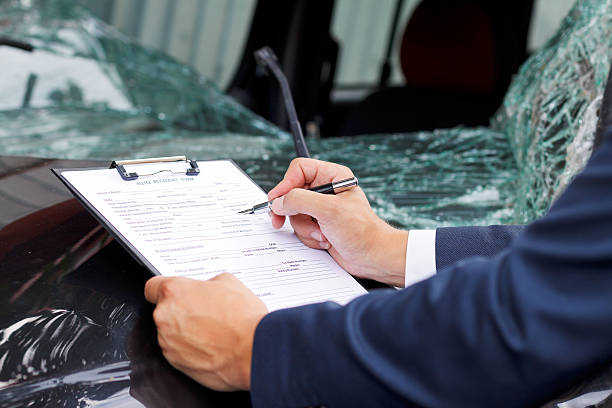
Word Choice
Word choice is the writer’s exquisite array of color palettes, the delicate brushstrokes on the canvas of storytelling.
It’s the nuanced selection of each word, akin to selecting the perfect ingredient for a gourmet dish, where even the subtlest nuance can make all the difference.
Every word is a brushstroke, painting not only a picture but also crafting an atmosphere, evoking emotions, and engaging the senses.
Whether you opt for the vivid hues of descriptive language to bring scenes to life or the muted tones of restraint to build tension, each word is a strategic decision that shapes the reader’s experience.
The art of word choice is about precision, impact, and the subtle resonance it creates in the reader’s mind, making the narrative not just engaging but unforgettable, ensuring that the car accident description becomes an indelible masterpiece etched into the reader’s memory.
Sentence Structure
Sentence structure is the composer’s score in the symphony of writing, a tool that shapes the rhythm and melody of your narrative.
Just as a musician crafts a piece of music with varying notes and rests, the writer arranges sentences to create a harmonious and compelling reading experience.
The art of sentence structure involves knowing when to employ short, staccato sentences for impact, and when to unleash the flow of longer, lyrical ones for a sense of fluidity and depth.
It’s the cadence that mirrors the pacing of the story, propelling the reader through action scenes and allowing for reflection in moments of introspection.
By mastering sentence structure, a writer conducts the reader’s emotions and thoughts like a maestro directing an orchestra, making the car accident description not just a story but a carefully composed masterpiece of literary artistry.
Revision and Editing
Revision and editing are the sculptor’s chisel and the jeweler’s fine-tuning, the transformative acts that refine the rough gem of a manuscript into a dazzling literary masterpiece.
It’s the alchemical process of taking raw words and transmuting them into refined gold, where each revision hones the narrative’s edge, and every edit polishes the facets of language to perfection.
Through this alchemy, the writer becomes a wordsmith, shaping and molding the story until it gleams with clarity, precision, and emotional resonance.
Just as a diamond is cut to reveal its true brilliance, revision and editing unearth the true potential of your narrative, ensuring it sparkles and captures the reader’s imagination with an alluring radiance.
It’s here that the writer’s magic truly shines, turning a car accident description into a literary treasure that endures in the reader’s memory.
Peer Review
Peer review is the writer’s crucible of authenticity, where the narrative undergoes the scrutiny of fellow wordsmiths and emerges refined, like precious metal purified in fire.
It’s the invaluable process where trusted peers dissect your work with a discerning eye, offering fresh perspectives and unearthing hidden flaws.
Through this crucible, a writer gains clarity, insight, and the opportunity to address blind spots. It’s a collaborative dialogue that fosters growth, guiding the narrative toward its fullest potential.
The crucible of peer review is where ego yields to the pursuit of excellence, where constructive criticism becomes the catalyst for refinement, and where the car accident description, once scrutinized and enhanced, emerges as a literary gem polished to brilliance.
Self-Editing
Self-editing is the writer’s journey from creator to critic, a transformative process where the narrative is reshaped through introspection and meticulous revision.
It’s the act of distancing oneself from the creator’s hat to don the editor’s cap, approaching one’s work with an impartial and discerning eye.
In the solitude of self-editing, you become both the sculptor and the sculpted, chiseling away redundancies, smoothing out the rough edges, and enhancing the narrative’s clarity and impact.
It’s the pursuit of perfection, an iterative dance where you dissect your own words, seeking out inconsistencies and refining your prose with a precision that elevates your storytelling.
Through self-editing, the writer becomes a true artisan, honing their craft to ensure that the car accident description is not just informative but an artistic masterpiece, delivering a powerful and unforgettable narrative to its readers.
Frequently Asked Questions Describing a Car Accident in Writing
Why do I need to describe a car accident in writing?
Describing a car accident in writing is essential for various purposes, including insurance claims, legal proceedings, and accident reports. It helps provide an objective and detailed account of the incident.
What should I include in the introduction when describing a car accident?
In the introduction, include the date, time, and location of the accident, details about the vehicles involved, and any relevant information about road and weather conditions.
How do I describe the sequence of events leading up to the accident?
Provide a chronological account of the incident, starting with what led to the accident, such as the actions of the drivers, contributing factors, and any warnings or signals given.
What information should I provide about the vehicles and drivers involved?
Describe the make, model, color, and license plate numbers of the vehicles. Include the names of the drivers and their roles in the accident, such as the at-fault driver or victim.
How can I accurately describe the point of impact in the accident?
Use specific terms to describe the impact, such as “rear-end collision,” “side-swipe,” or “T-bone.” Be precise in detailing where and how the vehicles collided.
What should I do if there were injuries in the accident?
If injuries occurred, describe them factually, including the names of those involved, the extent of their injuries, and any immediate actions taken, such as calling for medical assistance.
Should I include information about property damage in the description?
Yes, describe the extent of damage to the vehicles involved, including any dislodged parts or damage to property. This information is crucial for insurance claims and legal matters.
Is it important to include witness statements when describing a car accident?
Yes, including witness statements is valuable. Document their observations, names, and contact information as they can provide additional insights into the accident’s events.
What information about police involvement should be included in the description?
Describe the presence of law enforcement, including the officer’s name, badge number, and any actions they took, such as issuing citations or filing accident reports.
Can I mention contributing factors that may have led to the accident?
Yes, you should include any contributing factors, such as excessive speed, distracted driving, adverse weather, or road conditions. Be objective and factual in your description.
How should I conclude my description of the car accident?
In the conclusion, summarize the key details of the accident and its consequences. Mention any immediate actions taken, such as exchanging insurance information or towing vehicles.
What is the importance of being clear and concise when describing a car accident in writing?
Being clear and concise is crucial to provide an accurate and objective account. Avoid personal opinions or emotions and focus on presenting the facts accurately for the benefit of insurance claims and legal proceedings.
Conclusion
In conclusion of Describing A Car Accident in Writing, describing a car accident in writing is a critical skill that serves various purposes, including insurance claims, legal matters, and official accident reports.
The process involves providing a detailed, objective, and chronological account of the incident, including the introduction, vehicle and driver details, the sequence of events, the point of impact, injuries, property damage, witness statements, police involvement, and contributing factors.
Maintaining clarity and conciseness is essential, as it ensures that the description is accurate and impartial, devoid of personal opinions or emotions.
By following the step-by-step process and adhering to these guidelines, one can effectively convey the crucial information needed to address the aftermath of a car accident, thus facilitating a smoother resolution of the situation.

